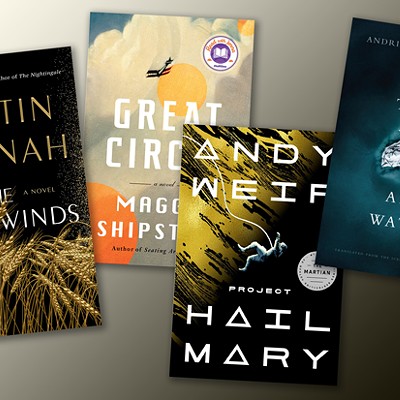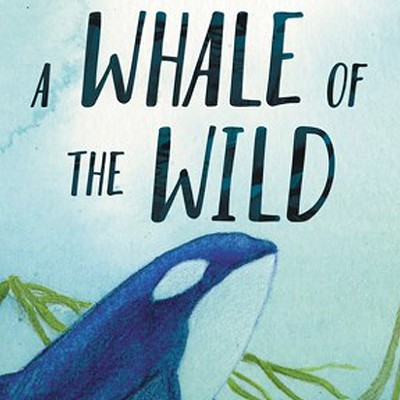Perhaps books about apocalyptic events don't seem very summertime effervescent, or perhaps they are the just the proper counterweight to all the sunshine and living-is-easy. Three great novels (like seriously great, well-crafted works of art) for beach and hammock reading.
"Highest Tide"
Just as "To Kill A Mockingbird" was Southern Gothic, "High Tide" should be considered a top example of Northwest Gothic. A breakout first novel by Jim Lynch, the coming-of-age story is set in Puget Sound. Miles O'Mailley is a 13-year old boy who has some normal teenage tendencies (i.e., pining for his older, 18-year old neighbor, a budding local rock star and the troubled daughter of a troubled judge), some normal troubles (i.e., arguing parents), an abnormal best friend (who loves to air guitar), but mostly is distracted by his peculiar fascination with Rachel Carson and ecology. Miles is a thoughtful, eminently likeable character, prone to observations and musings that cleverly balance his teenage sensibilities with smart marine biologist observations, like when considering colorful mollusks in a tide pool. "Almost everything else in the northern Pacific is dressed to blend with pale surroundings. Nudibranchs don't bother, in part because they taste so lousy they don't need camouflage to survive. But also, I decided right then, because their beauty is so startling it earns them a free pass, the same way life brakes for peacocks, parade floats and supermodels."
While walking on the beach, Miles discovers a giant squid washed ashore, far from its normal habitat. The moment is captured by a local reporter and, in an offhanded comment, Miles tries to go all Rachel Carson and tells the reporter that this forebodes something troubling. That photograph and comment spark national media attention—and a maelstrom that sets the meta-context for the playful, yet gripping, storyline. In the spirit and tone of "To Kill a Mocking Bird," the immediate story is a personal and small-town mystery, but all enveloped in larger social concerns (i.e., racial tension in "Mockingbird" global warming in "Highest Tide"). Interestingly, the book about a small Pacific Northwest town won some regional awards, but enjoyed only minor commercial success stateside; meanwhile, it was a best-seller in Britain.
"Sisterland"
Identical twin sisters with ESP? This must be a sci-fi novel, right? Not exactly.
With a skilled and thoughtful writer like Curtis Sittenfeld, the New York Times best-selling author of the highly acclaimed novels "Prep" and "American Wife," this summer's blockbuster release Sisterland is, yes, a psychological thriller, but it is also so much more.
It is 2009, St. Louis. Life is prosaically pleasant. Kate Tucker is a very suburban stay-at-home mother of two, while her husband is an aquatic chemistry professor at Washington University. An earthquake occurs in the middle of the night; it is brief and no damage is done. The next morning, though, local television station airs an interview with Kate's identical twin sister, Violet Shramm, who proclaims that she received a vision that a massive earthquake will occur soon.
This is the impetus of the novel, with the motif of science/reason (represented by husband and Kate's idealized version of herself) versus paranormal/emotion (e.g., sister and Kate's true self) driving forward the plot. While all that may sound high-minded, the story is, in fact, riveting.
The characters are so realistically written that it is easy to fall into the excitement simple questions like, "Will the earthquake actually happen?" and "Will ESP win over science?" that soon you find yourself ensnared in much deeper mysteries and much more complex plots, which alternate between present and past, and really are more about the chaos created while trying to escape one's true identity.
For me, the central riddle was: If you had an uncontrollable sixth sense telling you juicy tidbits like whom you're going to marry, who's going to die and how many children you're going to have, what would you do? Choice one: Become a fatalist and embrace the clairvoyance, which is the route Kate's sister, Violet, chooses. Or, choice two: Fight against who you are and try to blend in with civil society. In other words, spend your life fighting for control over your own fate and, in turn, the fate of those around you. This latter option is what Kate has chosen, and it makes her a manically panicked mother and wife.
The earthquake becomes the struggle's ultimate metaphor, not just between alter-egos but against destiny. Kate wants to be normal, and in the American fashion, she wants to reinvent herself, but she also has faith in her sister's premonition. (What's a girl to do?) To protect her family from physical danger, she becomes emotionally and financially invested in the earthquake and, in doing so, faces down her lifelong struggle for control.
"The sense," as the Shramm family calls it, is a fabulous plot device and has been well executed by a master psychological writer.
"The Road"
"The Road" teaches readers an important lesson: When there's nothing left to eat, we'll have to eat each other. This gut-wrenching novel was awarded the Pulitzer Prize for fiction in 2007.
Cormac McCarthy's third-person narrator follows an unnamed boy and his father in their odyssey through a terrifying post-apocalyptic landscape that has been ravaged by a mysterious disaster that wiped out most life on earth.
Yearning for the perceived safety of the ocean, the father and son trek across the barren landscape with little more than a revolver, two rounds in the chamber. The road they take is peppered with details of estrangement from other humans, and memories of the fate of the boy's mother. The grotesque imagery of the land, the father's sheer desperation for a shred of hope, and the disturbing reality of the situation give the novel a Steinbeckian effect. I often found myself recoiling from the book just like the final scene in "Grapes of Wrath."
The images McCarthy creates are some of the most disturbing in literature—cannibalistic bands are roving the road, taking captives who are gradually harvested for food, and other groups are not to be trusted as the pairs make the slow march to the coast. The devastation presents moral dilemma after moral dilemma as the father constantly reassures his son that they are in fact the good guys in their hopeless world.
Widely considered one of the greatest living American authors, McCarthy mirrors content and verbiage, using longer run-on sentences for the traveling sequences and short, choppy ones during the brief moments of action. Even more notable, McCarthy uses no grammar or punctuation in "The Road." The writing is as raw as the scorched ground they walk on. Understanding the cluttered, choppy, restless writing can be challenging, forcing rereads of sentences multiple times, sometimes requiring a review of an entire page, but the effect is McCarthy's masterstroke, an overwhelmingly tense—and oddly enjoyable—story that explores death, misery and how far morals last in times of desperation.





















